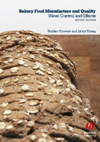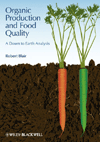Perspectives on modernized bakery pans and systems
Baking industry suppliers modernize pans, tins, trays, coatings, and pan handling systems.

Whether for Detroit-style pizza, cheesecake, cookies, baguettes, buns or brioche, more manufacturers are modernizing their pans, tins, trays, and other bakeware to gain strategic advantages. Coatings used to keep products are also getting a look, while automated handling systems used to streamline efficiency keep production hopping.
BAKEWARE SPECIALIZATIONS
Lloyd Pans, Spokane Valley, WA, had planned to roll out long pans for Detroit-style pizza at last year’s Pizza Expo. Instead, the company has been getting traction over Instagram and other marketing vehicles, says Evelyn Ainley, account manager.
“Detroit-style pizza is taking over the country by storm,” says Ainley. “We thought, ‘Wouldn’t it be fun to have a pizza that’s kind of like getting a foot-long sub sandwich?...’” The pan also can be used for varieties of pull-apart rolls, or a unique dessert. “We market it more as a party pizza pan. The depth and the width stay the same, but we offer it as a 12-, 18-, and 27-inch long pizza pan. It’s a very versatile, multi-functional type of pan.”
The company is having difficulty keeping up with the demand for the new pan, Ainley says. “We have just been inundated. It’s hot. It doesn’t show signs of stopping yet. We’re still riding that wave. We’re getting continuous calls and emails. There are pop-ups and franchises. It’s huge.”
Lloyd Pans also has come out with an 8x4 cheesecake pan that Ainley believes is unique in its size, following on the heels of an 8x4 round cake pan the company offered earlier. Lloyd also offers a silver-coat finish that offers a nice release, especially for cheesecakes. “Due to the oxidation in the aluminum pan, it gets a whole new DNA,” she says. “It stops that gray-green residue that large-volume cheesecake producers have dealt with before, especially if they’re shipping them out to customers. It’s more expensive, but the ROI is huge.”
Bundy Baking Solutions, Urbana, OH, produces brands that include American Pan, Chicago Metallic, DuraShield, Pan Glo, RTB, and Schaffer. The company mostly produces custom products, which commonly have designs that attempt to reduce both weight and energy consumption, and are focused on buns and bread products, says Trevor Walker, vice president of sales for North America.
Bundy also offers baguette trays with a unique tab lock design, Walker says. “You can remove the baking screen from the frame, and instead of having to send away the frame to have the screens drilled out and replaced, you can do those in the bakery,” he says. “There’s no risk of metal shavings—they don’t use rivets, you just bend out a series of tabs and then take the screen off.”
The company has been focusing on coatings that are applied not only to the surface of a pan, but up around the rims to prevent, say, hamburger buns with sesame seeds from sticking to the pans, which can cause issues with both baking and with sanitation, Walker says. And Bundy has seen a push for custom models, like muffins or cake pans, specific to popular products based on children’s television shows.
INTERNATIONAL PERSPECTIVES
RK Bakeware Co., Wuxi City, Jiangsu, China, tries to innovate on three fronts: tray materials, tray designs, and coatings, says Jack Wang, marketing and sales director. Originally a North American and European phenomenon, the bakery industry has spread rapidly throughout East Asia in recent years, which has led to a demand for all different types and sizes of trays, he says.
“The bakery world is divided,” Wang says. Different countries have their own common bakeware sizes, such as 18x26 inches in the U.S., and 60x40 centimeters in Europe. “Australia has another size. The tray size is different across several regions. And the trend in the past five years has been that Asian bakeries are growing quickly.”
RK Bakeware has collaborated with a coating manufacturer to develop an abrasion-resistant coating for baguette trays to protect then against damage due to heat, or the salt and/or oil used in production. The custom coating is useful for hot dog and hamburger buns, as well, Wang says.
THE FUTURE IS HERE
Sasa Demarle, Cranbury, NJ, has updated its silicone coatings, adding the Infinium 6001. With improved technical capability, the 6001 boosts longevity by about 30 percent, adding 5,000 cycles of use under normal conditions, and can be subjected to baking temperatures up to 500˚F (260˚C).
“It’s good for baguettes, brioche, and sweet baked cookies like Madeleines,” says Brandon Iacometta, marketing manager, Sasa Demarle. The company offers different coatings for sweet, fatty, and/or salty products, including pretzels.
Sasa Demarle also recently acquired startup 3D printing company Mokaya, a specialist in custom-made pastry molds focused on pastry chefs, hotels, and restaurants. “We have the capability to do custom things,” says Iacometta. “This allows us to do one-off unique designs—maybe the chef has something special they want to do for Christmas. This will allow us to expand on our innovation.”
Overall, Iacometta sees a trend toward healthier products, including gluten-free offerings, and he believes companies like his will be tailoring coatings to allergies, as well as sustainable and organic ingredients. “We’re tailoring different coatings and combinations for the best results,” he says, noting that Sasa Demarle can tailor pans and trays to specific machines and customer goals.
STREAMLINING PAN SYSTEMS
Bundy Baking Solutions has been working on a new automated, inline pan cleaning system that does not require flipping and removes the possibility of pans getting jammed, using brushes and vacuums to clean off the pans. This removes stuck seeds and dried protein wash prior to the pans reentering the baking cycle, Walker says.
Bakers are interested in getting more throughput from their existing bakery systems, which has led to an increase in the size of pans. “Instead of 4x6 bun pans, we’re seeing 6x8,” Walker says. “It’s something that needs to be looked at from a bakery system standpoint. We have bakers wanting to use larger pans on systems designed for smaller ones. You need to make sure their current system can handle larger pans, when you’re talking about tight radius turns and additional process flows.”
Colborne Foodbiotics, Lake Forest, IL, offers a Robotic Pan Handling System with several benefits that go beyond simply saving on labor costs, says Rick Hoskins, CEO. “A mechanical system has several disadvantages. Mechanical systems are much harder on pans and require more-frequent replacement or reconditioning of pans.” He also notes mechanical systems require a much-larger footprint.
Colborne’s robotic system uses proprietary end effector technology that’s much easier on pans, says Hoskins, and the pan handling system can be easily installed in line, and in a tight footprint, with limited additional conveyors for infeed and outfeed.
“Our system allows bakeries to take advantage of robotic technology without having to incorporate expensive cart retrieval systems, says Hoskins. “Bakeries can use their existing cart storage system and manually load and unload the robotic cells. By using a robotic solution with the kind of end effector technology we have, bakeries can essentially run an unlimited number of pan types without changing the tool. This is a great option for bakeries that run a high number of SKUs.”
Looking for a reprint of this article?
From high-res PDFs to custom plaques, order your copy today!









